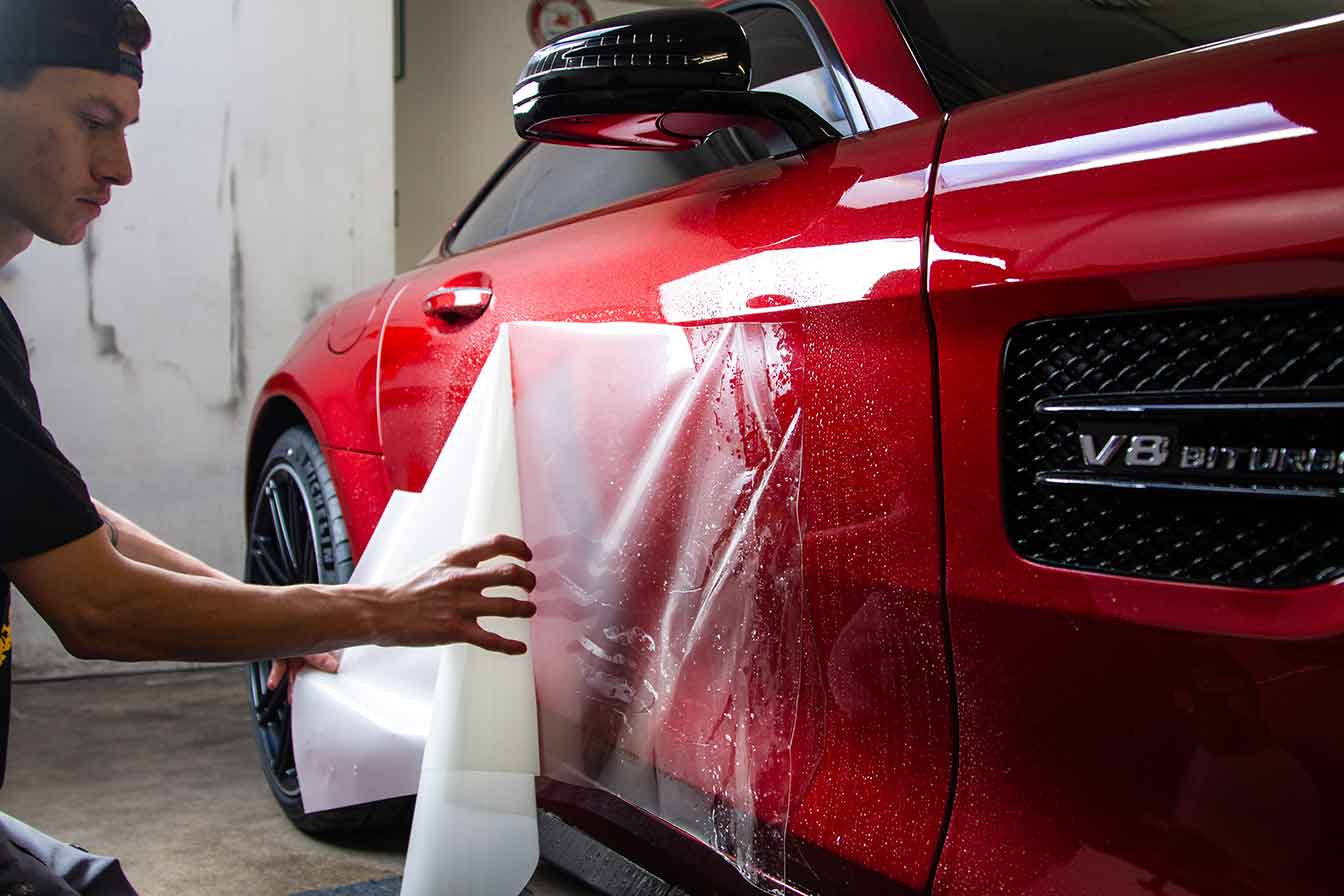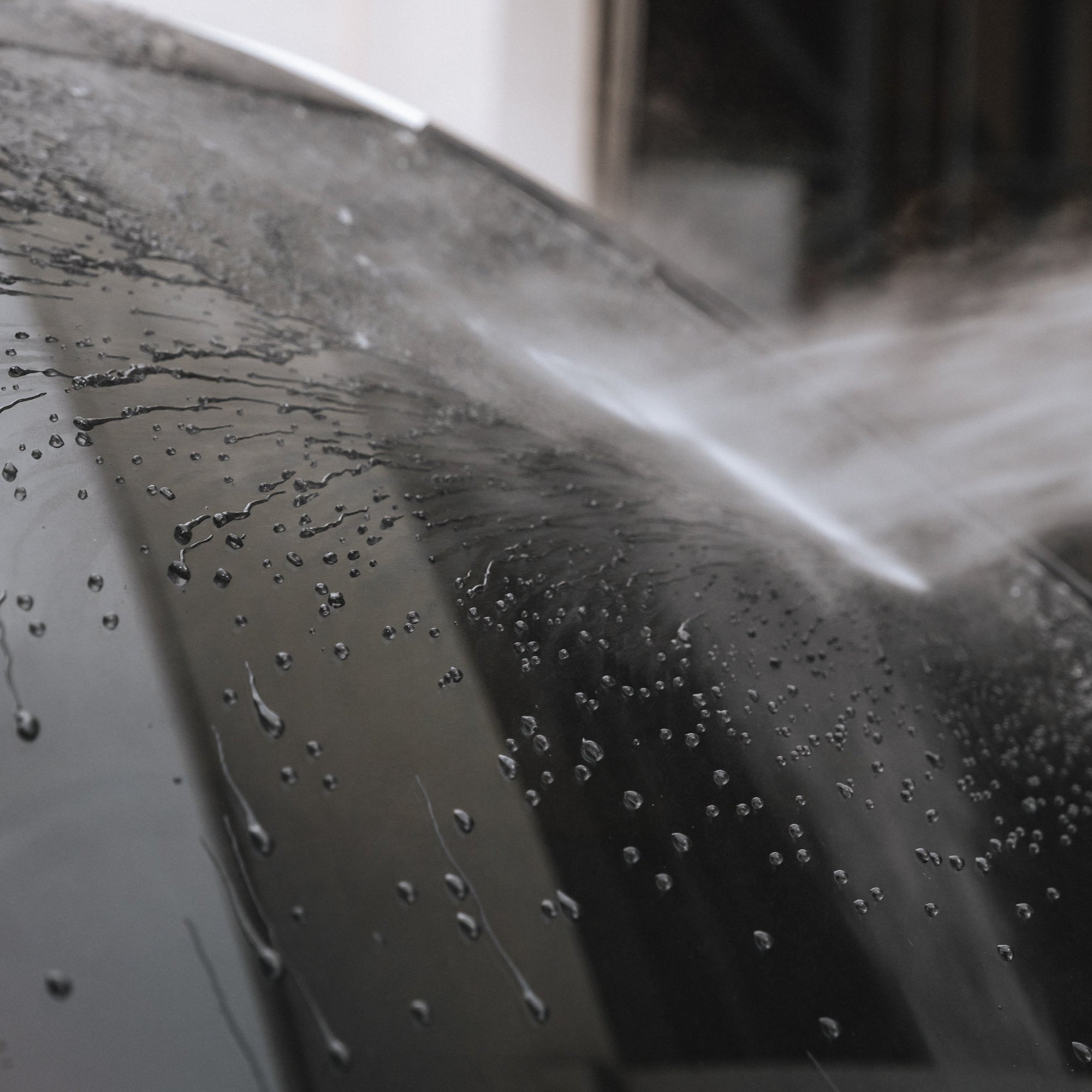Transform Your Ride with Ceramic Coating: A Detailed Process
Transform Your Ride with Ceramic Coating: A Detailed Process
Blog Article
Recognizing the Scientific Research Behind Ceramic Coating for Enhanced Automobile Longevity
The science of ceramic covering is reinventing car upkeep by offering an awesome guard versus rough environmental elements. As we discover the complex composition and application process of ceramic finishings, we discover the secrets behind their remarkable security and long life (ceramic coating). Just how does this contrast to standard techniques, and what ramifications does it have for lorry maintenance in the lengthy term?

Structure of Ceramic Coatings
Ceramic coatings are largely composed of silicon dioxide (SiO2), which is obtained from natural products like quartz and sand. In enhancement to SiO2, ceramic coatings often incorporate titanium dioxide (TiO2) for improved UV protection and boosted resistance to ecological pollutants.
The formulation of ceramic finishings is a careful procedure where the focus of SiO2 can dramatically influence the layer's performance. Greater SiO2 content typically causes greater durability and solidity, contributing to the layer's ability to withstand scratches and chemical etching. Nonetheless, the balance of parts is vital; excessive SiO2 can make the finishing weak, while inadequate can endanger its safety residential or commercial properties.
Makers may likewise incorporate added compounds, such as polysilazane, to improve flexibility and convenience of application. These ingredients enhance the coating's hydrophobic buildings, ensuring water and impurities grain off the surface effortlessly. This crafted make-up emphasizes the efficacy of ceramic finishings in guarding a lorry's exterior against a selection of negative conditions.
Application Refine Discussed
Using a ceramic finishing to a vehicle includes several crucial steps, each important to making certain ideal adhesion and performance of the protective layer - ceramic coating. The process starts with a comprehensive clean and purification of the lorry's surface to get rid of dust, gunk, and previous waxes or sealants. This step is crucial as any impurities left on the surface area can impede the covering's ability to bond successfully
Following the initial cleansing, the next step entails polishing the automobile to get rid of any blemishes, such as swirl marks or scrapes. Polishing guarantees a smooth surface area, which is important for the finish to stick properly and give a consistent finish. After polishing, a surface area prep work spray is made use of to get rid of any type of staying residues and ensure that the surface is completely tidy.

Safety Advantages
Usually hailed for its outstanding safety qualities, a ceramic finish provides countless benefits that substantially boost vehicle longevity. At its core, ceramic coating creates a hard, semi-permanent barrier over a vehicle's outside, which acts as a shield against different environmental hazards.
Additionally, ceramic coverings exhibit hydrophobic buildings, implying they fend off water and facilitate a self-cleaning impact. This characteristic lowers the adherence of dirt and mud, simplifying maintenance and cleansing procedures. The finish's resistance to chemical etching better makes certain that the automobile's surface stays unblemished in spite of direct exposure to extreme cleansing agents and pollutants.
In addition to these safety benefits, the ceramic layer enhances a car's aesthetic appeal by developing a shiny finish that highlights color deepness and quality. This not just sustains the car's aesthetic allure yet also adds to its lasting worth by protecting the stability of its exterior gradually.
Contrasting to Typical Methods
Unlike conventional methods of lorry protection, such as shaving or sealants, ceramic layers provide an even more lasting and sturdy solution. Where waxes and sealants typically give a momentary layer of protection, frequently calling for reapplication every few months, ceramic finishes develop a semi-permanent bond with the automobile's paint. Go Here This bond produces a safety layer that is immune to ecological impurities, UV damage, and minor abrasions.
Typical waxes are largely made up of natural parts like carnauba wax, offering a glossy coating however doing not have the durable protective high qualities of ceramic layers. Sealers, while synthetic and offering a little better longevity than waxes, still fall brief in contrast to the durability and chemical resistance of ceramic layers. The sophisticated innovation of ceramic coverings incorporates nanotechnology, which allows them to fill out microscopic imperfections in the paint surface, leading to a smoother and a lot more hydrophobic finish.
In terms of application, ceramic finishings require a more meticulous process, typically requiring professional installment to guarantee optimal performance. This contrasts with the relatively uncomplicated application of waxes and sealers, which can be used at home. The remarkable defense and visual enhancement given by ceramic layers validate the financial investment for those looking for lasting car preservation.
Longevity and Upkeep
Exactly how does the longevity of ceramic finishes translate right into convenience of upkeep for vehicle owners? The advanced solution of ceramic coverings offers a robust protective layer on check my site the car's surface, Check This Out which substantially prolongs the lifespan of the automobile's outside coating. This sturdiness indicates that the finishing serves as a guard versus environmental impurities such as UV rays, bird droppings, and road crud, which can otherwise degrade paintwork in time. Consequently, vehicles coated with ceramic products need much less constant cleaning and outlining efforts, consequently reducing upkeep time and prices for proprietors.
In addition, the hydrophobic nature of ceramic layers enables water and various other liquids to bead up and roll off the surface area, bring dirt and debris with them. This property decreases the build-up of pollutants, making routine cleaning much more efficient and much less labor-intensive. Owners gain from a constantly streamlined, shiny look with marginal effort. While the finishing itself is lasting, it is not completely maintenance-free. Regular assessments for damage and periodic reapplication are recommended to make sure the protective layer continues to be intact. Hence, ceramic coverings provide a valuable equilibrium between long-lasting durability and streamlined upkeep for vehicle care.
Conclusion
Ceramic coverings, with their sophisticated chemical make-up of silicon dioxide and titanium dioxide, supply a formidable barrier against environmental damages, dramatically boosting vehicle durability. When contrasted to traditional techniques, ceramic layers offer superior protection versus UV rays, oxidation, and chemical etching - ceramic coating.
The solution of ceramic coatings is a precise procedure where the focus of SiO2 can significantly influence the coating's performance.Using a ceramic coating to a lorry entails a number of critical steps, each crucial to ensuring optimum adhesion and efficiency of the safety layer.Often hailed for its remarkable safety top qualities, a ceramic coating provides various advantages that considerably boost lorry longevity. The sophisticated formula of ceramic coverings provides a durable protective layer on the lorry's surface area, which considerably prolongs the lifespan of the car's outside surface.Ceramic coverings, with their sophisticated chemical structure of silicon dioxide and titanium dioxide, offer a formidable obstacle against ecological damages, significantly boosting lorry resilience.
Report this page